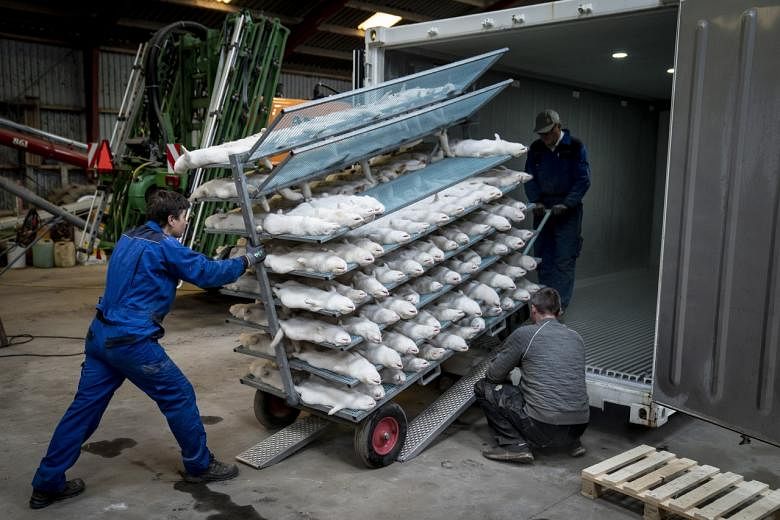SINGAPORE - Denmark recently announced that it would be culling all of its minks - estimated at around 15 to 17 million animals - to contain a mutated strain of coronavirus that was detected at mink farms and has spread to people.
The Straits Times spoke to Professor Wang Linfa, director of the emerging infectious diseases programme at Duke-NUS Medical School, to find out how diseases spread between people and animals, and if this latest development is cause for alarm.
Q: How did the minks get infected in the first place?
According to the World Health Organisation (WHO), the minks were infected after being exposed to humans who had Covid-19. To date, six countries - Denmark, the Netherlands, Spain, Sweden, Italy and the United States - have reported Sars-CoV-2 in their farmed minks to the World Organisation for Animal Health.
The WHO said that animals such as minks could act as a "reservoir" of the virus, passing the virus between them and posing a risk of uninfected humans catching it from them.
Q: What enables a disease to jump between different species, such as animals and humans, and how commonly does this occur?
When a disease can spread between humans and animals, it is known as a zoonotic disease.
Prof Wang said any virus needs to clear at least three hurdles to jump from species to species.
First, both species must have contact with each other. Second, the cells of the receiving species must have the right cell surface receptors, allowing the virus to enter and start replicating. Third, the receiving species must have an immune system that allows the virus to replicate and transmit itself.
"As one can appreciate, it is not easy to overcome all three hurdles and hence cross-species jump remains a rare event," he said.

Q: What are some well-known zoonotic diseases?
Rabies is one of the most deadly zoonotic viruses jumping from animal to humans, said Prof Wang.
Another example is the human immunodeficiency virus (HIV), which not only spread from animals to humans, but has also successfully maintained itself in the human population, he said.
Other examples include the Hendra virus, Nipah, Sars-CoV, Mers-CoV and Sars-CoV-2.
Prof Wang added that Sars-CoV-2, which causes Covid-19, poses the highest risk of a human-to-animal jump, known as "reverse zoonotic transmission", as demonstrated by the large scale infection of minks in many countries.
Q: Is the coronavirus that causes Covid-19 likely to be zoonotic, and are humans at risk of catching Covid-19 from animals? What about minks specifically?
Prof Wang said that scientists are almost 100 per cent certain that Sars-CoV-2 was an animal virus which spread to the human population.
"What we don't know is when and where that initial jump happened," he said.
He added that the risk of catching the coronavirus from animals such as minks does exist, but is lower than that of catching it from another human.
"We have over 50 million people infected and roaming around the globe. The minks are farmed animals and the risk of spreading the virus to the general public is very low," he said.
Q: Is the culling of 17 million minks an overreaction, or a necessary step to prevent the spread of the coronavirus?
Prof Wang noted that in the past, countries have carried out mass culling of animals to stop the spread of diseases. For instance, over a million pigs were culled in Malaysia during the Nipah virus outbreak there in the 90s. And during the Sars crisis in the 2000s, some 10,000 civet cats were killed.
But he said that it is very difficult to judge from a scientific standpoint whether the culling of the minks in Denmark was necessary .
"In dealing with a pandemic like Covid-19, over-reaction may be better than under-reaction," he added.
Q: Should the infection of minks be a cause for alarm? What can we learn from it?
Prof Wang said that while health officials and the public should remain alert following news of the transmission to minks, there is no need to be alarmed.
This is because it was already known "very early on" during the pandemic that animals such as dogs and cats could be infected.
He said: "Not all zoonotic transmission leads to severe disease or pandemic in humans. The international community has a long way to go in the context of pandemic preparedness.
"If we are serious about the prevention of future pandemics, we need to do a much better job of monitoring all zoonotic transmission events, not only those causing severe diseases. To achieve that, we need much more international collaboration and funding."












